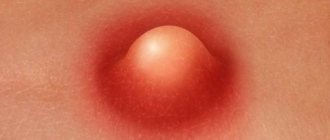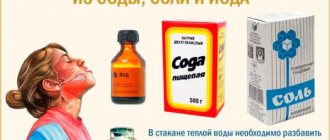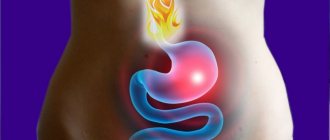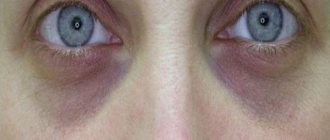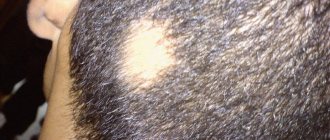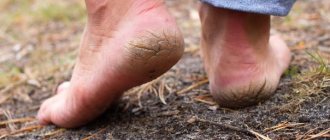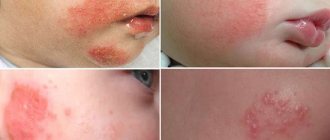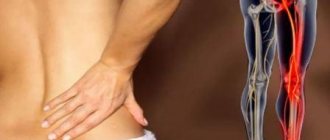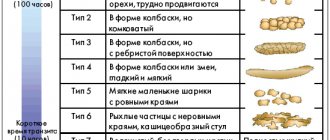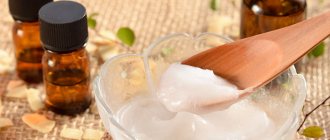From this article you will learn:
- what does a boil look like: photo,
- boil – treatment at home and at the doctor’s office,
- how to cure boils using folk remedies.
A boil is a skin abscess caused by infection of one of the hair follicles located deep in the skin.
After a few days, inflammation first develops - necrosis of the hair follicle and partially surrounding tissues occurs, and gradually a cavity filled with pus (i.e., an abscess) forms in this place. Boil is a common name (synonyms are chiry, chiri). In medicine, this pathology is usually called a boil, and this is the only correct name for this pathology. It most often occurs in young people 12-40 years old. Most often they occur on the face (in 65% of cases), but they can also occur on the neck, chest, scalp, groin, back, buttocks...
What is a boil?
The formation of a boil on the skin can manifest itself in varying intensity, depending on the individual qualities of the body.
Most often, inflammatory formation is manifested by the following features:
- The formation has an inflammatory process and protrudes above the skin level;
- The boil is most often red in color and causes pain when touched;
- Most often, the disease manifests itself in the form of slight redness with a thickening in the center;
- The boil has purulent contents , which are expelled as they fester;
- Most often it forms in the area of hair growth , however, in some situations it can appear in other areas of the body.
After the formation of suppuration, the tissue around the boil begins to die and become inflamed.
Features of the skin defect
An internal boil, despite its seemingly uncomplicated nature, causes a lot of trouble. It lies deep and only in 10% of cases breaks out on its own. But the surgeon has to deal with the remaining 90%. These are not banal acne, that is, scientific acne.
The disease is dangerous not only because of the presence of pus, but also because it can go inside, infecting the body and leading to a dangerous complication - sepsis.
The very possibility of the formation of a boil indicates that some kind of inflammatory process is going on in the body, which has activated staphylococci, which adds the danger of a serious large-scale infection. Pus may well provoke it.
Causes of boils
The appearance of this type of formation, like any type of disease, can occur for various reasons.
However, the most common ones stand out:
- Frequent contamination of the skin , chemicals especially often negatively affect the condition of the skin;
- Prolonged friction of the skin and infection in the lesions;
- Insect bites subjected to scratching, which leads to an inflammatory process;
- Increased sweating and frequent hypothermia;
- Reduced protective functions of the immune system that cannot cope with viral infections;
- Metabolic disorders and genetic predisposition.
The appearance of boils can very often occur as a result of improper skin care, as well as a lack of the necessary type of hygiene.
Factors of occurrence
The causative agent of the infection is usually a pyogenic bacterium - Staphylococcus aureus. This bacterium is present on the skin of any healthy person, and causes infection only if it reaches the deep layer of the skin (for example, through microtrauma). The development of boils is also promoted by:
- dirty skin;
- increased sweating;
- overweight;
- poor nutrition;
- hot humid climate;
- hormonal imbalances in the body;
- poor metabolism.
People with diabetes mellitus, skin diseases, and those prone to stress and depression are often at risk of developing furunculosis because they have a weakened immune system.
Signs and symptoms
The formation manifests itself as a compaction that has a point in the center. After a short time, the inflammation increases and appears in large quantities, and the appearance of pus is observed.
The boil is characterized by the following types of symptoms:
- Edema of the epidermis;
- Inflammatory process at the site of formation;
- Pain when pressing;
- Itching and burning;
- A feeling of tightness in the tissues that are located around the boil;
- Increased body temperature;
- General weakness.
Very often, when a boil forms, neighboring areas of the body are subject to inflammation, which leads to additional types of symptoms and reduced functioning of the human body.
Features of the pathology
Subcutaneous inflammation, affecting not only the surface of the epidermis, but also adipose tissue, as well as the deep layers of the dermis, can be diagnosed as an internal boil. The damaging element of this disease is the activation of staphylococcal microorganisms that can quickly multiply in favorable conditions.
Manifestations
The symptoms of this disease are usually quite pronounced:
the formation is dense and has a large penetration depth;- severe redness of the inflammation area affects a large volume of tissue;
- headache;
- increased body temperature;
- the patient feels pain when performing any actions in muscle tissue associated with suppuration;
- prolonged formation of a purulent head or its complete absence.
Most often, subcutaneous formations occur on the face and neck, in areas where the sebaceous glands are located and in places of increased sweating: above the lip, in the nose, in the area of the external auditory canal. There are frequent cases of localization of boils on the forearms, thighs and buttocks.
Development of education
The progression of pathology and maturation of the subcutaneous abscess takes several stages:
- Formation of infiltrate. At this stage, bacterial damage to the hair follicle occurs and the formation of an infiltrate that can reach up to 4 cm in diameter. In the area where a group of staphylococci accumulates, redness, swelling and painful tingling are observed.
A purulent-necrotic lesion appears after a few days in the core of the infiltrate and is a small yellowish rod. After spontaneous emptying of the purulent masses, the swelling gradually subsides and the patient’s condition returns to normal.- Regression and healing. The surface, freed from purulent discharge and necrotic accumulations, gradually tightens. However, if the depth of the lesion was too great, a noticeable scar may form on the skin.
Any boil goes through these stages, but the danger of an internal abscess is the too slow formation of a purulent core (in some cases it may be completely absent or grow inward), which significantly slows down the healing process and complicates treatment.
If the treatment is carried out correctly, the formation of boils under the skin should fade away. In cases of complications, the pathology can progress to the stage of recurrent or chronic furunculosis. This condition entails numerous complications: the development of tissue abscesses, meningitis, even sepsis.
Why does an abscess occur?
An internal boil occurs due to an imbalance of microorganisms populating the surface layer of the epidermis. Staphylococcal strains are able to remain on the surface of the skin in a latent state, settling on the mucous membranes.
However, there are factors that can trigger the progression of inflammation:
- severe hypothermia or overheating of the body;
- increased sweating of the skin;
avitaminosis;- dysfunction of various functional systems of the body;
- improper or insufficient hygiene;
- excessive physical activity;
- prolonged emotional stress;
- primary infectious lesions of the body (bronchitis, pyelonephritis, otitis media, sinusitis, tonsillitis);
- long-term use of drugs that suppress the immune system (for cancer);
- frequent trauma to the skin (shaving, insect bites, scratches, scratching for eczema, scabies);
- chronic stages of metabolic disorders (anemia, diabetes).
Dermatologists call the most common reason for the progression of the bacterial environment to be a decrease in the normal functioning of the immune system. Also among the most common cases of boils are a decrease in the protective mechanisms of the skin, its systematic injury and contamination.
In addition, you should know that staphylococcal infection can be easily transmitted in household conditions, so you should use
personal hygiene products.
Locations
The process of inflammation can appear in almost any part of the body.
Localization is most often observed in the following places on the body:
- Face - very often the formation of a boil in the facial area indicates frequent hypothermia; formations most often appear in the area of the nasolabial folds and cheeks. The appearance of a formation in the nose can provoke difficulty breathing and swelling of the mucous membranes;
- Ear – most often occurs in the inner part of the auricle. It is difficult to reach for treatment and can cause unpleasant symptoms of pain in the temple area;
- Neck – most often the problem appears in the back of the neck. Since this area most often comes into contact with things and can cause skin damage;
- Armpits – the disease is constantly exposed and can progress to more complex stages of development;
- Inguinal area - very often the lymph nodes can become inflamed, which lead to the formation of lumps containing pus;
- Buttocks and thighs - especially common in people who are forced to sit for long periods of time. This type of problem can also occur in people who are overweight.
In these locations, boils can form in large numbers and provoke the appearance of long-term unpleasant symptoms.
Symptoms
Common signs of a boil are:
- the appearance of skin formation;
- intoxication of the body.
Depending on the location of the purulent process, the boil has some distinctive features in the clinical picture of the disease:
1. On the face. Boils in this area immediately become noticeable and cause great discomfort to patients.
Located in the nose, ear, lips or eye, they cause severe pain when trying to laugh, eat, talk, or wash. In addition, the venous vessels on the face are very close to the surface of the skin and any injury to the boil can lead to the spread of microbes through the blood vessels and the occurrence of thrombosis or sepsis.
2. On the body. Boils often occur on the butt, thigh, or armpit. In the first case, painful sensations occur in patients while sitting and wearing tight trousers, and in the second - when moving the arm and touching the armpit. Patients may be concerned about general weakness, fever, nausea and dizziness.
A boil on the leg or groin is manifested by pain in these areas, itching and twitching sensations, the discomfort usually increases during active movements, walking, squatting or bending.
Boils on the body are dangerous due to complications such as regional lymphadenitis (inflammation of the lymph nodes) or lymphangitis (inflammation of the lymphatic vessels).
3. On the genitals. Boils in intimate places in women and men occur against the background of the proliferation of bacterial flora in the ducts of the glands responsible for moisturizing the reproductive organs (Bartholin's, Cooper's). Infection can also occur during shaving or depilation of hair in the perineum.
Boils on the labia and penis cause severe pain during urination, sexual intercourse, taking hygiene procedures and even wearing underwear. Complications of this process can include inflammatory diseases of the genitourinary system (cystitis, urethritis, colpitis, vaginitis, prostatitis).
Stage of development
The disease has three stages of development:
- The first stage is the appearance of a small compaction, which does not have clear boundaries, however, it is more painful;
- The second stage is formed after a few days. The boil quickly increases in size and a purulent point appears on the surface. The skin in the area of inflammation acquires a blue tint, pain increases sharply;
- The third stage is manifested by the maturation of the boil. A purulent core appears on the surface of the cone and the contents of the formation come out.
After the formation matures, scarring and healing of the wound occurs. Small bumps, as a rule, do not leave scars after they disappear.
When to contact a surgeon
Boils can be treated at home only for those who are not at risk (do not suffer from chronic diseases), and boils are small in size (up to 5 mm). You should not self-medicate in the following cases:
- if the appearance of a formation is accompanied by intense pain and fever;
- if the abscess has not opened within 2 weeks;
- if furunculosis has developed;
- if the abscess occurs in a small child;
- if the boil is near the nose, lips, in the ear canal;
- there was a relapse of the disease.
What is the danger of furunculosis?
Furunculosis can have the following dangerous consequences:
- Infection of healthy areas of the body . The contents of the formation contain staphylococci, which, upon contact with healthy skin, can cause new infections. There is also a possibility of infecting other people;
- The merging of several formations into one leads to the appearance of large affected areas;
- The infection can be transmitted to blood vessels and nearby tissues, causing an abscess;
- The appearance of sepsis;
- The spread of staphylococci throughout the body can lead to complex types of diseases.
Furunculosis can lead to the appearance of a large number of scars and spots on the skin after the disease is eliminated.
First aid at home
To reduce unpleasant symptoms at home, you can use the following methods:
- Immerse an area of the body in warm salt water;
- Apply warm compresses to relieve inflammation and pain;
- Use special means that are aimed at drawing out purulent contents;
- Apply an aloe leaf to the site of formation and wrap it in plastic wrap. This method will help reduce inflammation and speed up the maturation of the boil.
You should not cauterize or squeeze out the formation, otherwise you can aggravate the course of the disease.
Drug treatment
The use of special medications can quickly reduce unpleasant symptoms and block further spread of the disease.
However, it is recommended to use medicinal preparations with caution for areas of skin with increased sensitivity.
Boils on the face
The following medications are most commonly used in the facial area:
- Levomekol - the action of the substance is aimed at accelerating the metabolic process at the site of inflammation, which leads to rapid maturation and reduction of unpleasant symptoms. In addition, the ointment has broad antibacterial properties. Apply twice a day to the inflamed area. Cost 120 rubles ;
- Ichthyol ointment - used for large formations. Has the property of drawing out purulent contents. Relieves swelling and inflammation, promotes the formation of natural cell regeneration processes. Used twice a day. Apply a small amount to the affected area and secure with a band-aid. Cost 80 rubles ;
- Zinc ointment – has the property of having an antibacterial effect. Helps eliminate inflammation and prevents further spread of the disease. Apply three times a day. A small amount of product should be gently rubbed into the skin. Duration of treatment until symptoms disappear. Price 120 rubles .
Levomekol
Ichthyol ointment
Zinc Ointment
The use of drug treatment is carried out with extreme caution. The drugs are applied pointwise, avoiding the mucous membranes; if the drug gets into the eyes, rinse with plenty of water.
Boils on the body
Treatment of boils on the body can use the following types of drugs:
- Vishnevsky ointment - allows you to quickly reduce inflammation and promote the maturation process. A small amount of the substance must be applied to a cotton pad and applied to the affected area. Secure with adhesive tape. Used for 7 days before bedtime. Cost 70 rubles ;
- Tetracycline ointment - the drug contains an antibiotic, so it is recommended to use it with extreme caution. The active components relieve inflammation and accelerate blood circulation in the affected area, which contributes to a rapid healing process. Duration of use is up to 5 days. A small amount of ointment is applied in a thin layer to the boil twice a day. Price 50 rubles ;
- Oflokain ointment - the drug contains an antibiotic. The substance has anti-inflammatory properties. It has analgesic properties and helps relieve swelling. The drug is applied once a day for 5 days. Price 140 rubles .
Vishnevsky ointment
Tetracycline ointment
Oflokain ointment
Proper use of drugs can reduce the inflammatory process and eliminate formation in a short time.
Therapy
A boil is a disease that occurs in stages, therefore treatment is carried out in accordance with the stage of development of the purulent process:
1. At the initial stage, use:
- a course of penicillin antibiotics;
- injections of staphylococcal toxoid;
- physiotherapy: electrophoresis and ultraviolet irradiation.
2. When the boil matures and the abscess opens, local procedures are added to the treatment:
- mechanical removal of residual pus and dead tissue is carried out and the cavity is washed from the boil with aseptic solutions (salicylic alcohol, boric acid or a solution of furatsilin or hydrogen peroxide);
- a pulling ointment for boils (Vishnevsky, Levomekol or ichthyol) and antimicrobial (salicylic or erythromycin) is used.
3. At the healing stage the following are shown:
- vitamin therapy;
- UHF;
- biostimulants for skin resorption and restoration (with severe scarring).
Treatment at home
Traditional medicine methods are very often used to treat boils at home. Before starting treatment, it is necessary to test for allergic reactions of the body.
Boils on the face
In the facial area, it is recommended to use gentle methods of traditional treatment, these include:
- Raw potatoes - pass a small potato tuber through a meat grinder and apply the resulting mixture to the affected area, and fix it with a band-aid. Used daily before bed for 5 days;
- Aloe leaves – has broad anti-inflammatory and antibacterial properties. Cut the aloe leaf and remove the prickly part, apply it to the problem area and fix it with a band-aid. Recommended to use daily before bed. Duration of treatment until the formation is completely eliminated;
- Viburnum decoction has antibacterial properties and helps reduce inflammation and swelling of the skin. A handful of viburnum must be ground into a paste and poured with a glass of boiling water. Use the resulting mixture twice a day, 100 grams. Duration of treatment until the unpleasant symptoms disappear.
In the facial area, traditional treatment methods are used with extreme caution.
Boils on the body
Eliminating boils in the body area using traditional medicine methods can quickly reduce unpleasant symptoms and improve the natural processes of skin cell regeneration.
Most often used:
- Turmeric – has a high level of anti-inflammatory effects on the problem area. It has the property of increasing blood flow, which activates natural regeneration processes. Mix spice and water in equal proportions. Apply the resulting paste to the site of inflammation and secure with a band-aid. Duration of treatment is up to 10 days;
- Ointment with beeswax - has pulling properties. Mix beeswax and butter in equal proportions. Place on low heat and melt, without bringing to a boil, cool. Apply twice a day for up to 5 days;
- Honey and flour - allows you to remove all contents from the formation. Mix a spoonful of honey and flour to form a dough. Form the resulting mixture into a cake and apply to the affected area. Secure with adhesive tape. Hold until the lump disappears completely;
- Onion – has antibacterial properties, reduces the further development of the disease. The bulb must be cut and applied daily before bed to the affected area. Duration of treatment until the disease completely disappears;
- Calendula tincture – has antiseptic and wound-healing effects. Soak a cotton pad in the tincture and apply to the affected area, secure with a bandage and leave overnight. It is recommended to use daily for 5 days.
To achieve effectiveness in treatment, it is necessary to regularly use traditional treatment methods. Before starting treatment, it is recommended to consult a dermatologist.
How to use ointments correctly?
to use the ointment to treat a boil under the armpit or in another part of the body correctly, following the following recommendations:
- Apply the medicinal composition in a thin layer to the problem area, and apply a sterile piece of bandage or gauze on top, or immediately apply the ointment to the bandage and then attach it to the problem area.
- Change the bandage at least 2-3 times a day.
- When purulent contents drain, first clean the wound with an antiseptic and only then apply an ointment.
- Do not squeeze out the pus to avoid infection and complications.
- Before using the medicine, read the instructions for its use and exclude contraindications.
You should not frequently touch the problem area, especially on the face or in the intimate area. Also, do not heat the abscess, apply wet compresses, or expose the inflammation to ultraviolet radiation without a doctor’s prescription. Experts do not recommend wiping the affected area with antiseptics or soap solutions too often.
Secrets of quick treatment
To quickly treat a boil, you can use the following recipes:
- Mix honey and crushed aloe in equal proportions and apply to the damaged area;
- Turmeric – has a high level of anti-inflammatory effect. Allows you to speed up the ripening process;
- Saturate your diet with vitamin E , which activates natural regeneration processes in the body;
- Regularly apply warm compresses of water and sea salt.
Also, for quick treatment, you can contact a specialist who will prescribe medications to accelerate the maturation of the boil.
How to treat boils in children?
In childhood, the immune system is most often exposed to various consequences from the external environment. Therefore, the appearance of boils is a fairly common type of problem.
To treat this type of disease you should use:
- Salicylic alcohol - helps reduce the development of bacteria and reduce the process of inflammation. Used for small formations. Not for use on the face. Apply a small amount of the product to a cotton pad and wipe the damaged area twice a day, treatment duration is 5 days. Price 50 rubles . Prescribed for ages over 4 years;
- Tar ointment – has the property of reducing the process of inflammation and drawing out the contents of the formation. Apply a small amount to the formation twice a day and seal it with a band-aid. Duration until the problem disappears completely. Can be used from the age of 2 years. Average cost 90 rubles ;
- Bactroban ointment has antibacterial properties and acts specifically on the source of inflammation. It is necessary to apply twice a day, the duration of the course depends on the intensity of inflammation. Price 400 rubles . Can be used from the age of 3 years.
Salicylic alcohol
Ointment Tar
Bactroban ointment
If a large number of boils appear on the child’s body, it is necessary to use antibacterial agents for internal use.
However, this type of medication is prescribed individually for each child by a medical professional.
How to treat boils in pregnant women?
During the period of bearing a child, a woman’s body can be exposed to various infections. The appearance of boils at different stages of pregnancy requires compliance with a special type of treatment that will not pose a threat to the health of the child and mother.
The most commonly used types of drugs are:
- Hydrogen peroxide – has antibacterial properties. It is prescribed to wipe the damaged area twice a day. Used in all trimesters of pregnancy. Duration of treatment until the problem disappears completely. Cost 35 rubles ;
- Vishnevsky ointment - used in the first and second trimester of pregnancy. Apply twice to the damaged area and secure with adhesive tape. Duration of treatment until the unpleasant symptoms disappear. Price 70 rubles ;
- Sulfur ointment - used to eliminate further spread of bacteria to healthy areas. The substance is applied by a point method directly to the affected area. The course of treatment is up to 10 days. Used in the first and second trimester. Cost 90 rubles .
Hydrogen peroxide
Vishnevsky ointment
Sulfur ointment
Traditional medicine recipes:
- Aloe juice has antibacterial and anti-inflammatory effects. The plant juice must be mixed with water in equal proportions. Moisten a cotton pad and apply to the damaged area overnight for the duration of treatment until the formation completely disappears;
- Plantain - has the property of disinfecting the formation and promoting the rapid maturation of the boil. The plant leaf must be washed with water and beaten with a wooden hammer. The plant is applied to the lesion and fixed with a bandage. Such a compress must be left overnight; most often, 5-6 days are enough for the defect to completely disappear.
It is also of great importance to maintain proper nutrition and saturate the body with useful vitamins and minerals, which will increase the natural processes of regeneration of body cells.
How to cure an internal boil
To get rid of purulent formation, there are traditional and modern methods. The former are aimed at accelerating the maturation of the head, and the latter at faster healing of the opened abscess.
Both medication and physiotherapeutic methods are used. For example, to quickly form a rod, use dry heat and drawing ointments such as Ichthyol. Laser therapy or a surgical scalpel is used to open the abscess and excise the affected tissue. UHF therapy will help disinfect the affected area. If any complications arise, antibiotics will be needed.
At the beginning of a boil attack, to make it easier for a person, not to hurt, pull, or itch so much, you can resort to time-tested remedies:
- anoint the affected area with iodine, camphor or salicylic solution;
- apply a tampon with Ichthyol ointment.
Until the wound after the boil heals, you cannot go to the bathhouse or sauna. Frequent water procedures are undesirable.
An internal boil is a rather dangerous disease, which can most often only be cured with the help of a surgeon. The doctor injects an anesthetic and cuts the skin so that the purulent masses come out. A drain may need to be placed if the volume of pus is large.
Pharmacy products
Due to the fact that boils of various types have tormented people for a long time, how to treat internal boils is well known today.
To strengthen the immune system and reduce the risk of relapses, it is necessary to take vitamin complexes, which include vitamins A, C, and group B.
If the abscess breaks out on its own, then you need to disinfect the area with a solution of hydrogen peroxide, and then cover the wound with a sterile bandage. However, it wouldn't hurt to consult a dermatologist or surgeon. You may need to take an antibiotic. Only a doctor can prescribe it. Taken on its own, it can do more harm than good.
To get rid of staphylococcus, the doctor will most likely prescribe:
- autohemotherapy;
- protein therapy;
- toxoid injection.
Professional treatment of a purulent, inflamed boil is the guarantee that it will no longer bother a person.
Alternative methods
Among the mass of means to get rid of internal chirium, there are several effective folk methods. They help the stem ripen faster. For example, these are applications, compresses, cakes from:
- aloe juice;
- mixtures of flour and honey;
- garlic and sunflower oil;
- baked onion.
Can also be taken orally:
- juices from nettles or beets;
- Brewer's yeast;
- infusion of turmeric or fume.
What should not be done when treating boils?
During the treatment of inflammatory formation, it is prohibited to perform the following types of actions:
- It is forbidden to use brilliant green to treat education;
- It is not allowed to open the formation independently;
- It is prohibited to use cosmetics during the treatment of a boil;
- After the boil has matured, it is unacceptable to squeeze out the contents yourself ; healthy areas of the skin can be damaged;
- It is not allowed to peel off the scab after the wound begins to heal.
Proper care of the boil will reduce the likelihood of infection and recurrence of the infection. After treating the damaged area, you should treat your hands with antibacterial agents.
What not to do
The treatment of boils has its own specifics. Dermatologists unanimously prohibit trying to get rid of a purulent formation on your own. In addition, it is undesirable to take measures to accelerate aging without the advice of a doctor. Inside the boil there are live staphylococci with pus. If you open an abscess unprofessionally, the area affected by infection will increase. Hence the conclusion: only a doctor should deal with a boil.
In order for the opened lesion to heal faster, you will need to limit the carbohydrate content in your diet for some time and not drink alcohol.
How to get rid of marks after boils?
Proper treatment of boils reduces the likelihood of scars and scars.
However, in some cases, marks remain on the skin that can only be removed with the help of such procedures as:
- Laser resurfacing or chemical peeling;
- Using special preparations for the treatment of scars , for example, Contractubex, applied to the spot several times a day;
- Using lemon juice . This type of method allows you to lighten the skin and smooth out the stratum corneum.
Removal of spots and scars depends on their size. Most often, small scars disappear on their own, after a certain time, and do not require the use of special medications.
Why is it dangerous?
A boil under the skin is a fairly serious disease. Therefore, you should contact a surgeon who will correctly remove the abscess, saving the patient from the danger of meningitis, abscess, sepsis if infections have penetrated into the blood and lymph.
The skin boil lies quite deep. It is unlikely that you will be able to remove it yourself, but it is easy to spread staphylococci over a large area.
As a reaction to staphylococcal toxins, angioedema may even occur, indicating an allergic reaction.
Prevention
A person cannot completely exclude the possibility of this type of defect appearing on the skin, however, in some situations it is possible to reduce the risk of boils.
The following prevention methods are used for this:
- Saturate the body with vitamins and minerals . This type of prevention allows you to strengthen the immune system and reduce the manifestation of inflammatory processes on the skin;
- Review your diet . It is necessary to eliminate or reduce the consumption of harmful foods that can negatively affect your health, and reduce the likelihood of boils;
- Avoid contact with infected people;
- Keep your skin clean . Proper hygiene helps prevent the appearance of defects. Also, special attention must be paid to the correct selection of cosmetics;
- Use personal hygiene products;
- In cases of skin damage, treat the area with antiseptic preparations;
- Avoid hypothermia and promptly eliminate various diseases of internal organs.
Proper prevention will help reduce the likelihood of bacterial infection and, if necessary, prevent the recurrence of the disease.
